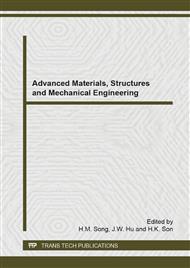p.95
p.104
p.112
p.117
p.122
p.128
p.137
p.143
p.148
Experimental and Numerical Investigation on Flow Characteristics of a Water Jet Impingement
Abstract:
Water jet impingement on a flat target surface can be seen in cooling and cleaning applications, where the flow velocity, static and dynamic pressures are the three main parameters to be considered. Although the jet impingement is a basic free-surface liquid flow, the understanding of flow characteristics after the impingement is essentially needed to elucidate the flow behaviors and its influences to some specific processes. Therefore, the aim of this study is to investigate the flow characteristics of water jet impingement on a solid surface through the computational fluid dynamics and experiments. An obstacle with different thickness was added into the target surface, representing the uneven morphology of workpiece surface to be cooled or cleaned. The parameters considered were the jet impact angle and obstacle thickness, and the water layer formed radially from the stagnation point was observed and analyzed. According to the results, there was a good agreement between the numerical and experimental findings. The jet impact angle was found to remarkably affect all the performance characteristics examined in this study. The water flow characteristics were found to be changed after the flow impinged and passed over the obstacle. In addition, the static and dynamic pressures caused by the impingement were also presented and discussed.
Info:
Periodical:
Pages:
122-127
Citation:
Online since:
September 2014
Authors:
Price:
Сopyright:
© 2014 Trans Tech Publications Ltd. All Rights Reserved
Share:
Citation:


